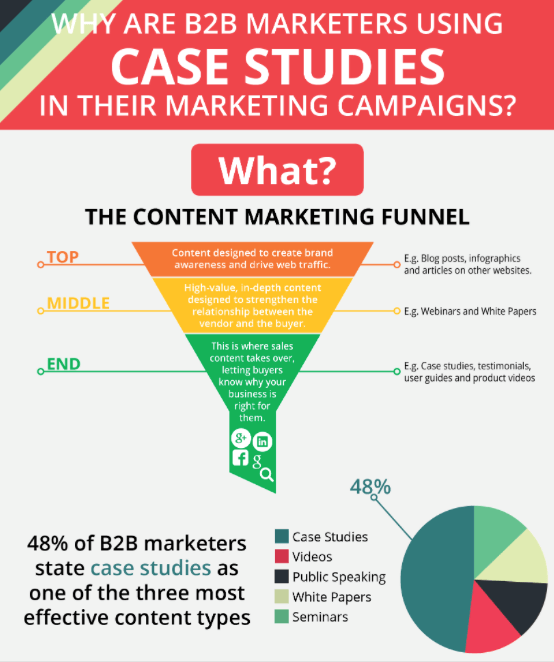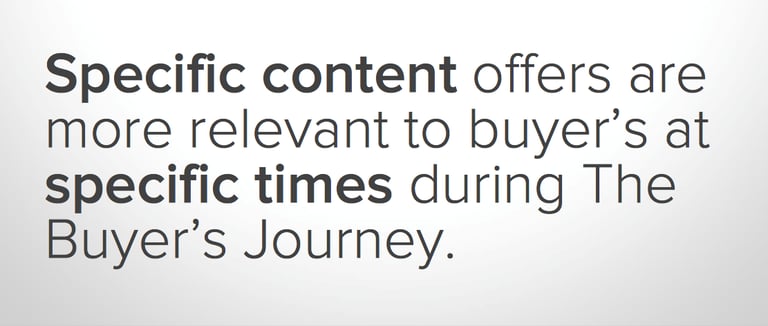Wouldn't it be a wonderful thing indeed if each and every person that visited your website as part of their Buyer Journey for the first time made a purchase?
Yes. Yes, it would.
However, wonderful things such as this are very rarely as forthcoming as any of us would like.
According to ReTargeter, only 2% of site traffic converts on the first visit – meaning, as the wilier mathematicians amongst you will have already surmised, that there is a whopping 98% of your first-time website visitors who click away without purchasing a new product or service.
The question, therefore, that inbound marketers are faced with is: what can we do to entice our target audience back and convert them into buyers?

Understanding Buyer Journeys
Research reveals that 67% of the buyer's journey is now conducted online. Above all else, this figure shows that an inbound marketing strategy is an important part of the sales process – i.e. the online marketing techniques that draw visitors and customers to our websites, like understanding what your buyer personas look like and applying that to your strategy – is absolutely critical to attracting and retaining customers at every stage of the journey.
Importantly, however, what companies need to pay attention to is the fact that inbound marketing efforts is not just about creating website content that bring new visitors to the door, but rather it's about creating a range of content assets that are optimised specifically for different visitors at different stages of the buyer's journey.
So what are the different buyers journey stages?
Well, essentially there are three:
- Awareness stage
- Consideration stage
- Decision stage
HubSpot produce the following graphic illuminating the process.
(Image source: cdn2.hubspot.net)
But let’s break the stages down so we understand them each a little better.
- Awareness Stage: This is the stage when a new prospect will become aware that he/she has a problem or pain point and begins research into what solutions there may be. Unsure what it is they are looking for at this point, these prospects are open to suggestions from all angles.
- Consideration Stage: Now that the prospect has conducted some research, he/she has discovered that there are several different companies offering a few potential solutions. The prospect will now evaluate those potential solutions from the various options and pit them against each other to decide why they should go for a particular brand or another.
- Decision Stage: This is the point where the prospect becomes a customer. Having weighed up all options, the prospect takes the decision to make a purchase.
- Post-purchase Stage: There is of course a fourth stage not featured in the HubSpot image – the post-purchase stage. This, essentially, is the aftercare stage, where the customer will be deciding whether or not he/she is happy with the product or service just purchased. Building loyalty and efforts to retain customers are all built into this stage (from an inbound marketing perspective).
- To effectively provide the relevant content to users, you must understand the customer journey and create content accordingly. The consideration stage content must be completely different from the awareness and decision stage content.
How to Optimise Your Site for a Multi-Visit Buyer's Journey
It's pretty clear now why so many (98%) of first-time visitors don't convert – most of them will only be at the awareness stage, and therefore the purchase decision has not been made.
And so, as inbound marketers, we must therefore ensure that we have adequate hordes of inbound marketing material that are optimised for each cohort of visitors and potential customers at the various stages of the buyer's journey and the meet requirements in most if not all search engines.
So, let's consider what that optimal content might be for each of the four buyer's journey stages we have outlined.
Buyer's Journey - The Awareness Stage
During the awareness stage, we can assume that your prospects will at the stage of the buying process where they will be full of questions – usually quite broad – about how to solve the problem (or problems) recently identified. They will begin to search for educational information concerning the issues they are having, and also about the industry that may be able to provide solutions (i.e. your industry).

Developing buyer and inbound marketing buyer personas is crucial here for identifying what sorts of questions these prospects will be asking. Getting into the minds of those at the awareness stage will help you craft content that is specifically designed to answer their questions.
When creating this content, your blog post/s must pay careful consideration to keywords that reference the issues that they are facing. As such, blogs, articles, infographics and videos that address the concerns of those in the awareness stage will prove to be your most valuable assets.
Buyer's Journey - The Consideration Stage
During the consideration stage, your prospects will be at the beginning of the buying process where they formulate more specific queries as they consider which of the services, they've discovered will provide the best solutions to their problems.
Prospects will now want to know more about your company, what your values are, and a hell of lot more about the services and solutions that you offer. It is now, therefore, the job of the inbound marketer to ensure that there is plenty of easily discoverable information on the company's website that answers these questions.
eBooks, case studies, webinars, white papers, service/product/solution demonstrations and research reports are all of top value for prospects at the consideration stage of the buyer's journey.
Buyer's Journey - The Decision Stage
Congratulations! You’ve got a new customer.
But, the work doesn't stop here. Now you need to ensure that they are a happy customer. This means solving any pain-points that there might be with using your product or service, sending thank you emails, surveys and invitations to attend customer care or service calls.

In terms of website content, keep lively with blog posts – this time with a focus of adding value rather than raising awareness. Provide tutorials, either formatted as blog posts, infographics or videos (or all three!). Ensure you’ve got your thank you emails waiting to be fired off, and that you have a range of surveys that you can invite your new customers to participate in.
Buyer's Journey - The Post-Purchase Stage
This is the stage where you need to be ensuring that you're doing everything to turn your one-off customers into loyal and returning customers. This means keeping them engaged with your brand, and offering a few incentives that entice them to make repeat purchases and keep your business in mind.
Email newsletters are a good place to start, especially if they contain exclusive offers for your valued customers. Triggered emails, too, are useful when sent out at strategic moments – such as just before a subscription renewal.
Unlocking gated content is another good strategy, as is sending out discounts and special offers for repeat renewals and purchases.
It will also pay to remind your customers of the value of staying with you – so send out information pertaining to this. If you're saving them money with a special FinTech app, remind them weekly about exactly how much they are actually saving.
If it's something like a brain-training game or what have you, send out improvement reports.
All of this comes down to improving the lifetime value of your customers. Since customer retention is far more cost-effective than acquisition, the post-purchase stage is perhaps the most important of all.







